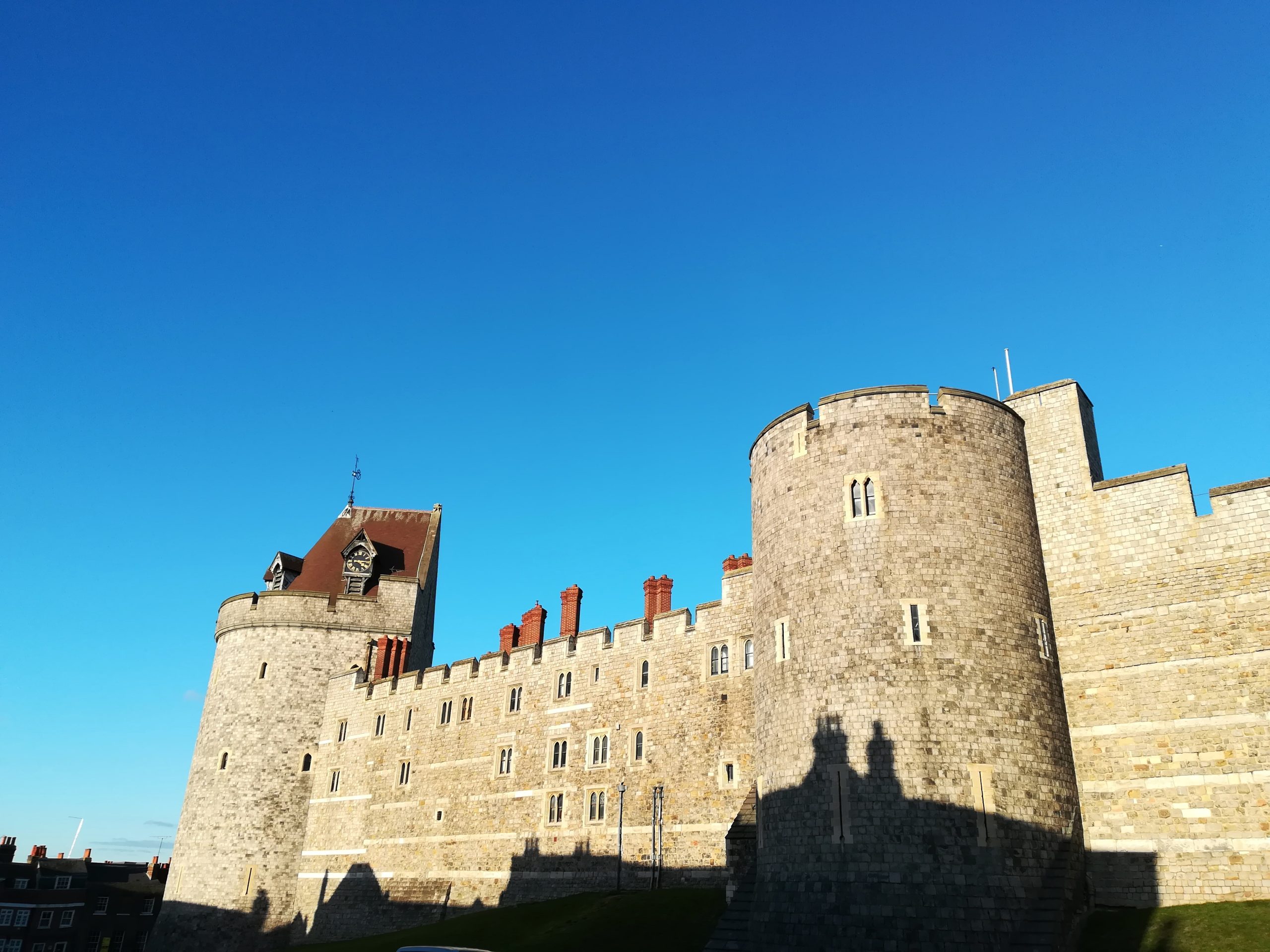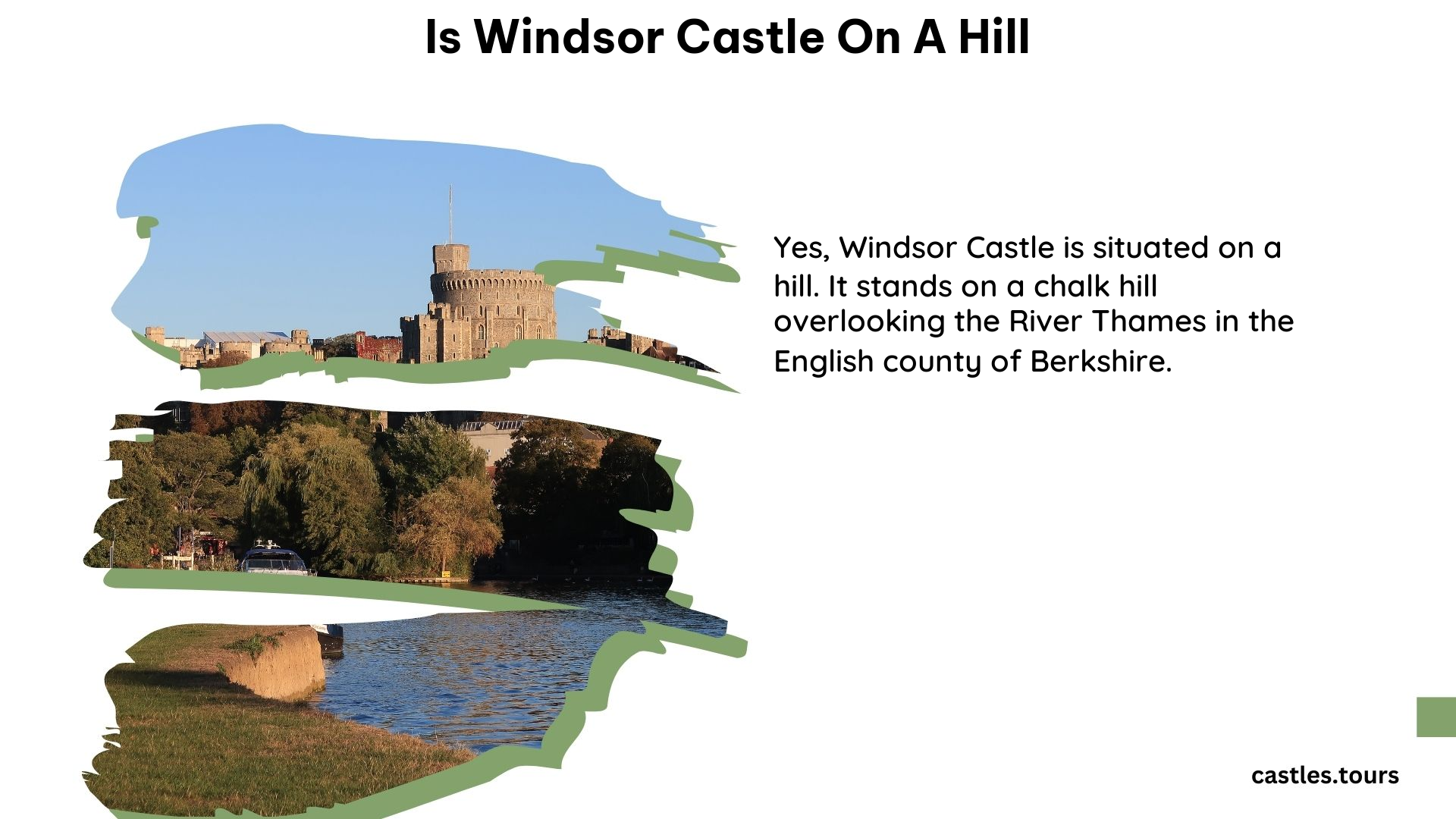Yes, Windsor Castle is situated on a hill. The castle’s position on top of steep ground has meant that the castle’s gardens are limited in scale. The castle is built on a man-made motte, which is 50 feet (15 m) high and made from chalk originally excavated from the surrounding ditch. This strategic location allowed for easy defense and provided a commanding view of the surrounding area, including the River Thames and Windsor Forest.
The Elevation of Windsor Castle

- Windsor Castle is located on a natural chalk hill, which rises 167 feet (51 m) above the River Thames.
- The castle’s position on this elevated ground has been a key factor in its strategic importance throughout history.
- The castle’s motte, or artificial hill, was constructed in the 11th century and stands 50 feet (15 m) high, further enhancing the castle’s dominant position.
- This elevated location provided the castle’s defenders with a clear view of the surrounding countryside, allowing them to spot approaching threats and prepare for potential attacks.
The Topography of the Castle Site

- The castle is situated on a spur of land that juts out from the surrounding landscape, with steep slopes on three sides.
- The River Thames flows along the eastern side of the castle, adding to the natural defenses of the site.
- The castle’s position on the hill also meant that the castle’s gardens were limited in scale, as the steep terrain made it difficult to create expansive landscaped areas.
- The chalk-based soil of the hill provided a stable foundation for the castle’s construction, allowing it to withstand the test of time.
The Strategic Importance of the Castle’s Location
- The elevated position of Windsor Castle has made it a formidable defensive structure throughout its history.
- The castle’s location on a hill allowed its defenders to monitor the surrounding area and respond quickly to any threats.
- The steep slopes and natural barriers, such as the River Thames, made it difficult for attackers to approach the castle, further enhancing its defensive capabilities.
- The castle’s strategic location has also made it an important seat of power for the British monarchy, with many monarchs using it as a primary residence and center of government.
The Architectural Adaptations to the Hilly Terrain
- The castle’s architects had to design the buildings and structures to accommodate the steep terrain of the hill.
- The castle’s walls and towers were built to take advantage of the natural slopes, with some sections of the walls being taller on the downhill side to maintain a consistent height.
- The castle’s main entrance, known as the Norman Gate, is located on the western side of the castle, where the ground is relatively level, making it easier for visitors and supplies to access the castle.
- The castle’s internal layout and design were also influenced by the hilly terrain, with some buildings and courtyards being built on different levels to adapt to the changing elevation.
The Challenges of Maintaining a Castle on a Hill
- The steep slopes and elevated position of Windsor Castle have presented unique challenges for its maintenance and upkeep over the centuries.
- The castle’s location on a hill has made it more susceptible to weathering and erosion, with the chalk-based soil and steep slopes making it more vulnerable to landslides and other natural disasters.
- The limited space available on the hill has also made it challenging to expand the castle’s gardens and landscaped areas, which are an important part of the castle’s overall aesthetic and historical significance.
- Maintaining the castle’s infrastructure, such as the roads and pathways leading to the castle, has also been a ongoing challenge due to the steep terrain and the need to ensure safe access for visitors and staff.
Conclusion
In conclusion, Windsor Castle is indeed situated on a hill, a strategic location that has played a crucial role in the castle’s history and development. The castle’s elevated position on a natural chalk hill, combined with the man-made motte, has provided it with a commanding view of the surrounding area and enhanced its defensive capabilities. While the hilly terrain has presented unique challenges for the castle’s architects, engineers, and maintenance staff, the castle’s position on the hill remains a defining feature of this iconic British landmark.
Reference:
– Windsor Castle – Official Website
– Windsor Castle – Wikipedia
– The History of Windsor Castle
